 Today is Blog Action Day, and Global Exchange is a proud Partner. Blog Action Day is an event that happens each year when bloggers from around the world blog about the same issue to raise awareness and hopefully generate a global discussion around that issue.
Today is Blog Action Day, and Global Exchange is a proud Partner. Blog Action Day is an event that happens each year when bloggers from around the world blog about the same issue to raise awareness and hopefully generate a global discussion around that issue.
This Blog Action Day the issue is food, (today is also World Food Day) and to mark the occasion we share with you an interview about food justice with Anuradha Mittal, which is an excerpt from the book Rights of Nature: Making a Case for the Universal Declaration of the Rights of Mother Earth.
Anuradha Mittal is an internationally renowned expert on trade, development, agriculture and human rights. Born in India, her work has always focused on elevating the voices of small farmers particularly in the global South. She lives in California, where she directs the Oakland Institute and with her partner, raises their daughter, Soleil. Interviewing Anuradha is Global Exchange Rights Based Campaigner Shannon Biggs.
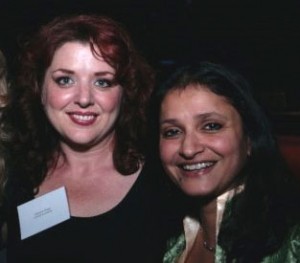
Shannon Biggs and Anuradha Mittal
Interview with Anuradha Mittal:
Food Justice: The Nature of Farming and Farming with Nature
GX: How do industrial agriculture practices such as Genetically Modified Organisms (GMOs), pesticides, mono cropping trade regimes, etc. impact nature?
Anuradha: The idea of industrial agriculture is based on working against nature, rather than working with nature. Using poisons, uprooting ecosystems for mono cropping is a total violation of the natural order. Industrial agriculture also replaces the small farmer, a steward of land and biodiversity. The result is alienation from land, food sources, and disrespect for those who grow food while nurturing the earth. We forget how to treat nature, to be grateful for its abundance and to give back what we take.
It is a systemic violation of the rights of nature for the short-term profit of large corporations. Food is “cheaper” but we are externalizing the cost of polluting land, air, water our own bodies, and the bodies of those who work the fields. In a way, the worst assault is genetic engineering, the human manipulation of an organism’s genetic material in ways that do not occur naturally, something that is not possible in nature. The patenting of life forms is also a spiritual question – is life invented or created? We are not bigger than nature itself. But to what court can you take these violations?
GX: What is at stake for us if we don’t change our relationship to the earth and all species?
Anuradha: If we do not change our relationship with nature, including how we do agriculture, we are all over a cliff. Climate change is real, and the poorest people in the poorest countries are facing the fallout already. It is also a recipe for famine. It is a lose/lose when food becomes a commodity to be traded in international markets or converted to ethanol for our cars or when large corporations who can speculate on food prices replace farmers. Today, over 1 billion people—that is one sixth of humanity—are food insecure. We must learn the harsh lessons of a food system based on property and profits, or the outcome will be felt by earth.
GX: If everyone agreed that nature has inherent rights, would that be enough to stop
factory farming?
Anuradha: We have to understand that on one hand our personal actions are important: where we shop, supporting local farmers markets and CSAs. Our conscious behavior is the foundation, but that is not enough. No matter how much we change our thinking, the understanding that nature is not property to be exploited must come with mechanisms of real accountability for corporations. The larger political change where we can rip “personhood” from corporations, make corporations accountable to communities and ecosystems where they extract wealth— if this doesn’t happen, for every personal step forward we take it is still 10 steps back, because we haven’t changed the law which caters to big business. Agribusiness will continue to use air, land water etc. in the same destructive ways.
GX: How would recognizing nature’s rights in law support sustainable, small-scale farming?
Anuradha: A rights-based approach places nature’s wellbeing at the center of agricultural systems, not short-term profits. Growing food sustainably cannot be done large-scale. You cannot grow thousands of acres of a single crop without killing biodiversity, using herbicides, or transforming proud farmers to sharecroppers. Inevitably, recognizing nature’s rights means supporting small-scale farming. It opens
the door for massive land reform, the ability for farmers to practice ancient methods of farming, such as seed saving instead of being forced to use Monsanto’s patented seeds. It means recognizing that agricultural innovation takes place by farmers in their fields, not scientists in lab coats. We’re talking about justice: food justice, environmental and climate justice.
—
Interested in reading other food-themed blog posts? Check out our Reality Tours blog post about food sovereignty today called “From Sacred Seeds and Abundant Reads to Food Sovereignty Movement Building.” For more food-themed blog posts go the Blog Action Day website for a list of blogs taking part in Blog Action Day today.
 Happy Blog Action Day! Today bloggers around the world unite to blog about human rights. (Cool, huh?) So today I’m exploring the connection between Fair Trade and human rights, and how you can support economic justice for all.
Happy Blog Action Day! Today bloggers around the world unite to blog about human rights. (Cool, huh?) So today I’m exploring the connection between Fair Trade and human rights, and how you can support economic justice for all. Here’s what’s really happening in trade today; Child and forced labor and child trafficking in cocoa fields where our chocolate comes from, and a global market economy plagued by sweatshops, human rights violations and environmental degradation.
Here’s what’s really happening in trade today; Child and forced labor and child trafficking in cocoa fields where our chocolate comes from, and a global market economy plagued by sweatshops, human rights violations and environmental degradation.  TAKE ACTION! Here are some actions you can take to explore this topic more and take action:
TAKE ACTION! Here are some actions you can take to explore this topic more and take action:

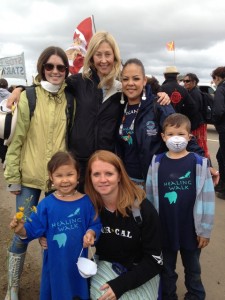
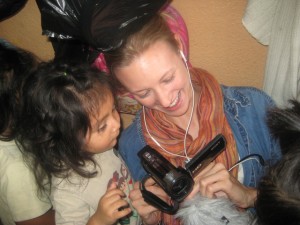

 But it is heartening to see how many young people wear a peace sign t-shirt (or tattoo!) proudly front and center and who fervently work to create a new world with tolerance and respect, free from violence, racism and want.
But it is heartening to see how many young people wear a peace sign t-shirt (or tattoo!) proudly front and center and who fervently work to create a new world with tolerance and respect, free from violence, racism and want.

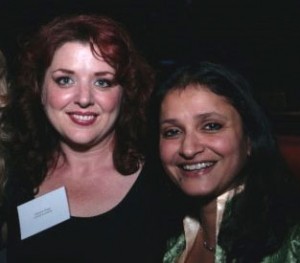
 If you would like to write a blog post about FOOD and take part in Blog Action Day, visit the
If you would like to write a blog post about FOOD and take part in Blog Action Day, visit the 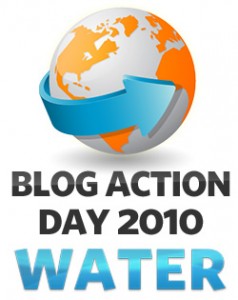


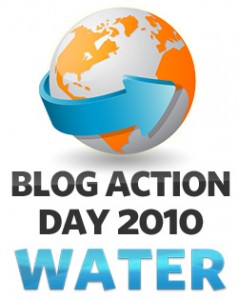 Blog Action Day is October 15th, 2010. It’s an annual event uniting bloggers around the world who agree to post about the same issue on the same day. The goal is to raise awareness and start a global discussion around an important issue that impacts us all. This year, the theme is water.
Blog Action Day is October 15th, 2010. It’s an annual event uniting bloggers around the world who agree to post about the same issue on the same day. The goal is to raise awareness and start a global discussion around an important issue that impacts us all. This year, the theme is water.